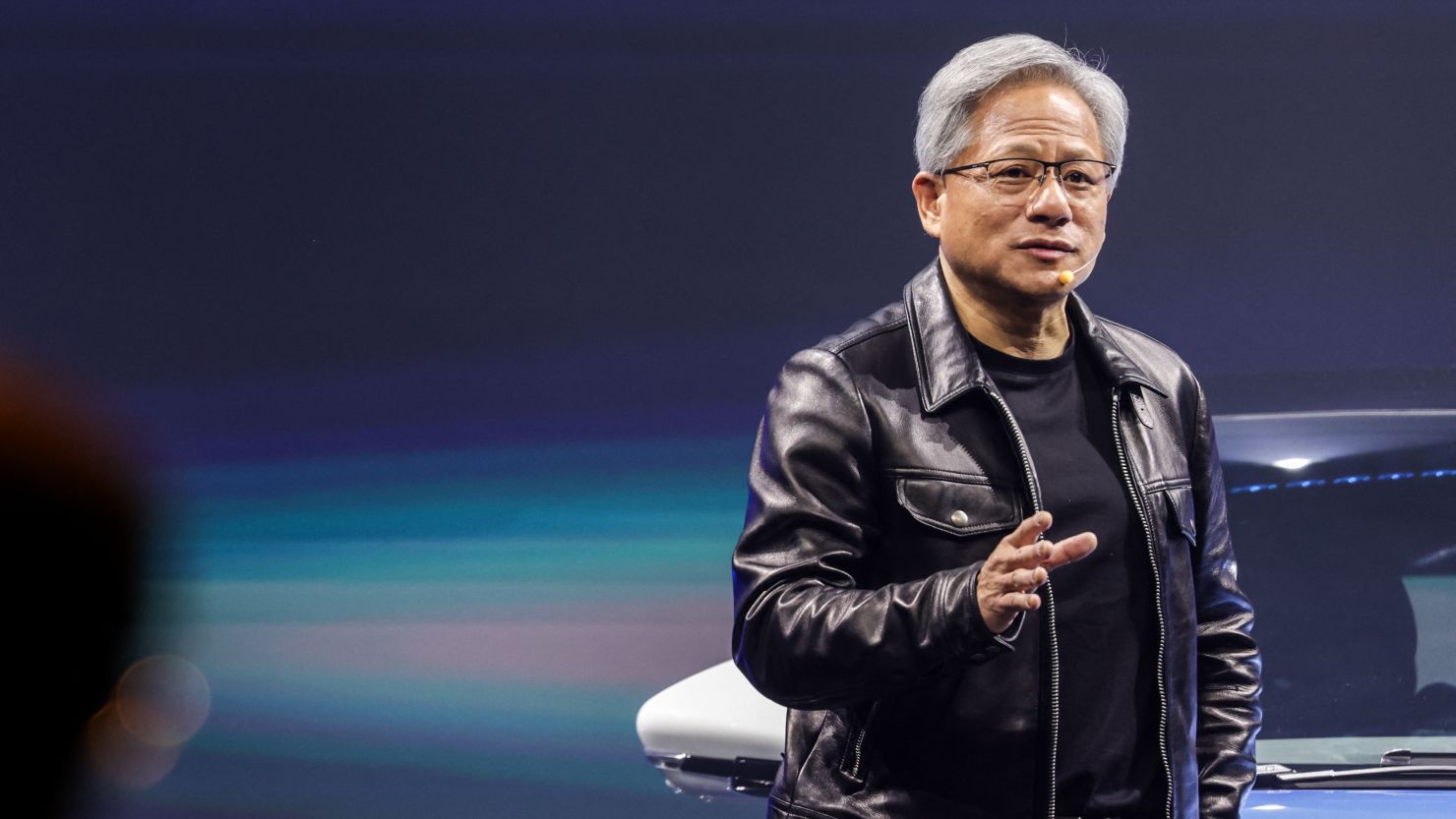Jensen Huang On China: The Rise Of Formidable AI Competitors

Table of Contents
Huang's Assessment of China's AI Strengths
China's rise as an AI competitor isn't a matter of speculation; it's a reality increasingly acknowledged by industry leaders like Jensen Huang. Several key factors contribute to China's formidable position.
Talent Pool and Research
China boasts a vast and rapidly growing pool of engineers and scientists specializing in AI. Its numerous top-tier universities and research institutions, such as Tsinghua University, Peking University, and the Chinese Academy of Sciences, consistently produce groundbreaking research and innovative talent.
- Leading Research Institutions: These institutions are actively involved in cutting-edge AI research, publishing prolifically in top journals and conferences.
- Government Initiatives: The Chinese government has heavily invested in AI research and development through initiatives like the "Made in China 2025" plan, providing substantial funding and support for AI-focused projects.
- Breakthroughs & Publications: Chinese researchers are increasingly contributing significant breakthroughs in areas like deep learning, computer vision, and natural language processing, rivaling their Western counterparts.
Government Support and Investment
The Chinese government's commitment to AI is unparalleled. Massive financial investments fuel infrastructure development and support the growth of numerous AI companies. This targeted approach has accelerated the adoption and implementation of AI technologies across various sectors.
- National AI Strategy: China's comprehensive national AI strategy includes ambitious goals and significant funding allocations aimed at achieving global leadership in AI.
- Infrastructure Development: Significant investments in high-performance computing infrastructure have provided the essential foundation for large-scale AI development.
- Funding for AI Companies: Generous government funding and subsidies have enabled Chinese AI companies to scale rapidly and compete on the global stage.
Rapid Technological Advancement
China's rapid technological advancements in specific AI subfields are particularly noteworthy. We're seeing impressive progress in areas such as facial recognition, natural language processing, and AI-powered surveillance systems.
- Successful AI Companies: Companies like SenseTime, Baidu, and Alibaba have demonstrated remarkable success in applying AI technologies to diverse applications.
- AI Applications in China: AI is being integrated into various sectors, including finance, healthcare, transportation, and security, demonstrating a practical application of technological advancements.
- Surpassing Western Competitors: In certain specific applications, such as facial recognition technology, Chinese companies have arguably surpassed their Western counterparts in both scale and accuracy.
Challenges Faced by China's AI Sector
Despite China's impressive strides, several challenges hinder its path to complete AI dominance.
Technological Dependence
China's AI sector, while rapidly advancing, still relies on some foreign technologies, particularly in high-end chip manufacturing. This dependence creates potential vulnerabilities and bottlenecks.
- Reliance on Foreign Suppliers: China’s dependence on foreign suppliers for critical components, such as advanced semiconductors, presents a significant hurdle to achieving full technological independence.
- Supply Chain Vulnerabilities: This reliance exposes China’s AI sector to potential disruptions in the global supply chain and geopolitical tensions.
- Technological Bottlenecks: The lack of domestically produced, cutting-edge components may hinder the pace of China's AI development in specific high-performance computing areas.
Data Privacy and Regulation
Navigating China's complex data privacy regulations is crucial for AI development. Balancing data accessibility needed for AI training with the need to protect privacy presents a significant challenge.
- Regulatory Landscape: China's evolving data privacy laws pose both opportunities and constraints for AI companies operating within the country.
- Data Privacy Concerns: The sheer volume of data collected and used in China’s AI systems raises concerns about individual privacy and potential misuse of information.
- Balancing Innovation and Regulation: Finding the right balance between facilitating AI innovation and protecting user privacy is a critical task for Chinese policymakers.
Geopolitical Considerations
The geopolitical implications of China’s burgeoning AI power are profound. Increased competition for global AI dominance and potential trade restrictions add layers of complexity.
- Trade Restrictions and Sanctions: The US and other countries may impose trade restrictions or sanctions on Chinese AI companies, impacting their access to key technologies and markets.
- Global AI Dominance: The competition between China and the US for global AI leadership has significant implications for technological innovation and geopolitical stability.
- Strategic Importance of AI: AI is increasingly viewed as a crucial component of national security and economic competitiveness, fueling international competition and strategic rivalry.
Implications for the Global AI Landscape
China's rapid progress in AI fundamentally reshapes the global AI landscape.
Increased Competition
China's rise intensifies competition, especially for US-based AI companies. Market share shifts and the pace of innovation will be significantly influenced by this heightened competition.
- Market Share Shifts: China’s growing AI capabilities are likely to lead to significant shifts in global market share across various AI-related sectors.
- Effects on Global AI Innovation: Increased competition could accelerate global AI innovation as companies strive to maintain a competitive edge.
Shift in Technological Leadership
The potential for a shift in global AI leadership, or at least a more balanced distribution of power, is a significant implication of China's advances.
- Long-Term Implications: China's progress challenges the traditional dominance of the US in AI research and development. The future distribution of global AI leadership remains uncertain.
- Potential Scenarios: Several scenarios are possible, from a bipolar AI world with both China and the US leading the way, to a more multipolar landscape with other nations emerging as key players.
Conclusion
Jensen Huang's insights highlight China's remarkable progress in AI, a development marked by a strong talent pool, substantial government investment, and impressive technological advancements. However, challenges remain, including technological dependence, data privacy concerns, and geopolitical considerations. China's rise as a major player in the AI arena significantly alters the global competitive landscape, presenting both opportunities and challenges for companies and nations worldwide. To stay informed about this dynamic field, continue researching Jensen Huang China AI developments and explore further resources on the evolving dynamics of global AI competition. Understanding this interplay is crucial for navigating the future of AI.

Featured Posts
-
 Elon Musk Fathered Amber Heards Twins Examining The Evidence
May 30, 2025
Elon Musk Fathered Amber Heards Twins Examining The Evidence
May 30, 2025 -
 Dolberg 25 Mal Et Realistisk Mal Chokskifte I Vente
May 30, 2025
Dolberg 25 Mal Et Realistisk Mal Chokskifte I Vente
May 30, 2025 -
 Medvedevs French Open Exit Norries Victory And Djokovics Continued Success
May 30, 2025
Medvedevs French Open Exit Norries Victory And Djokovics Continued Success
May 30, 2025 -
 Fan Favorite Avenger Snubbed No Endgame Return Invite
May 30, 2025
Fan Favorite Avenger Snubbed No Endgame Return Invite
May 30, 2025 -
 2026 Metallica M72 Tour Uk And European Dates Confirmed
May 30, 2025
2026 Metallica M72 Tour Uk And European Dates Confirmed
May 30, 2025
Latest Posts
-
 Previewing The 2025 Pro Motocross Season
May 31, 2025
Previewing The 2025 Pro Motocross Season
May 31, 2025 -
 2025 Pro Motocross Championship What To Expect
May 31, 2025
2025 Pro Motocross Championship What To Expect
May 31, 2025 -
 Love Moto Stop Cancer 2025 Online Auction Items Up For Bid
May 31, 2025
Love Moto Stop Cancer 2025 Online Auction Items Up For Bid
May 31, 2025 -
 Pro Motocross 2025 Riders Teams And Predictions
May 31, 2025
Pro Motocross 2025 Riders Teams And Predictions
May 31, 2025 -
 Get Ready Supercross Returns To Salt Lake City
May 31, 2025
Get Ready Supercross Returns To Salt Lake City
May 31, 2025
